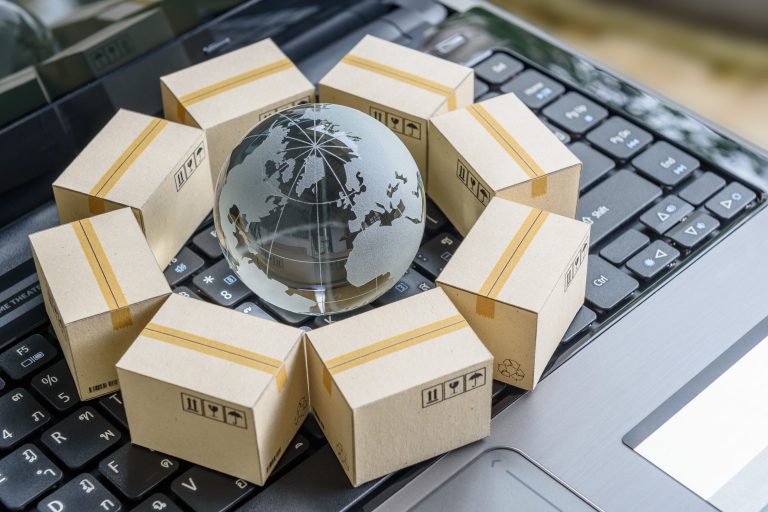
Thirty-three days. That is the average amount of time it takes a U.S. firm to receive an international payment at a cost of $50 to $60 per transaction.
According to PYMNTS’ new Cross-Border Retail Payments report from December 2021/January 2022, the going is slow because unlike domestic payments, cross-border payments must bounce across various financial institutions so currencies can be converted. Additional snags like wait times, the alignment of payment options, currency exchanges, having to process international transactions and regulatory issues also impede the process.
And yet, the demand for — and use of — cross-border transactions by individuals is currently one of the fastest-growing market segments as consumers seek new places and venues to buy goods and services with a borderless mindset.
Unsurprisingly, a growing number of retailers are looking to seize this multinational opportunity and are hurriedly making changes to their platforms to make it all work quickly, safely and seamlessly.
It’s Just Better
Consumers are now making record amounts of international purchases, thanks to the one-click simplicity of ordering and delivering goods that makes it easy to buy something from the other side of the world and get it to their doorstep. Add in the pandemic implications that have made digital shopping a preferred option where every digital storefront is essentially in the same distance away, and the stage is set for growth — as well as the formation of new purchasing habits.
“The pandemic pushed consumers to try new ways of shopping, rely on eCommerce to purchase items, and so on. As a result, many consumers became more comfortable shopping online and outside their country,” said Chuck Huang, founder and CEO of Citcon. “Other factors driving consumers to shop cross-border include access to better prices, specific cross-border brands or goods at a quality level not available in their country,” Huang added.
To better attract consumers in this competitive but flattened new retail world order, merchants — especially small and mid-size businesses — must leverage relationships with third-party providers to help manage cross-border complexities involving payments and more.
Another tactic retailers in this space need to address is the ability to offer automated website translation that make consumers everywhere feel welcome, by enabling them to pay in their native language and local or preferred currency.
On that note, 46% of the top 50 eCommerce sites have versions of their sites in at least four different languages, one-third of of which derive at least 20% of their sales across borders. Some companies, such as Apple, Samsung, and Shein, get at least half of their online traffic from foreign countries.
Consider How People Shop
Like so much of the digital world, cross-border retail and payments are increasingly going mobile with transactions migrating to cell phones.
“In fact, $12 billion of eBay’s Q3 2021 [gross merchandise value] came from transactions made on mobile devices,” said Avritti Khandurie Mittal, eBay’s vice president of products, payment and risk in the report.
Because cell phones are now considered the mini-computers everyone carries around in their pockets, mobile cross-border purchasing via apps and the like is hot. Consider, for instance, that 70% of China — that’s nearly 100 million people, or triple the U.S. population — now has internet access that’s primarily via mobile devices.
“The volume of cross-border payments is expected to continue to grow rapidly as economies navigate the ongoing pandemic,” stated Mittal. “[The] scarcity of products resulting from the pandemic has encouraged consumers to transact more internationally.”
Just like local purchasing, the cross-border transaction of the future must also be quick, seamless and convenient. Take, for instance, the ability of retailers to sell things via QR codes: If it’s mobile-friendly and multi-functional, then you can likely expect to see more of it.
Prioritize Trust-Centered Transactions
One key hesitation that consumers have when buying things overseas or internationally is their fear of being scammed or becoming a victim of fraud. At the core of these reactions is often a lack of consumer protection or easy avenue of recourse.
Huang said retailers must focus on the consumer experience to mitigate these concerns. The little details in terms of consumer touchpoints and purchasing interactions matter greatly, he said. If a site is not accessible or if a consumer has trouble paying, for instance, these represent key barriers that demand addressing to ensure a flawless experience without hiccups.
“Can customers choose a language option on your site? Are you offering their preferred local payment method? Are you upfront about your available shipping options and costs?” Huang asked.
In the end, it’s really about how much energy a retailer chooses to invest to make their visitors feel welcome.
“The effort to make your customer experience easy and comfortable for your cross-border consumers will put your company in the perfect position to take advantage of current global opportunities,” Huang said.